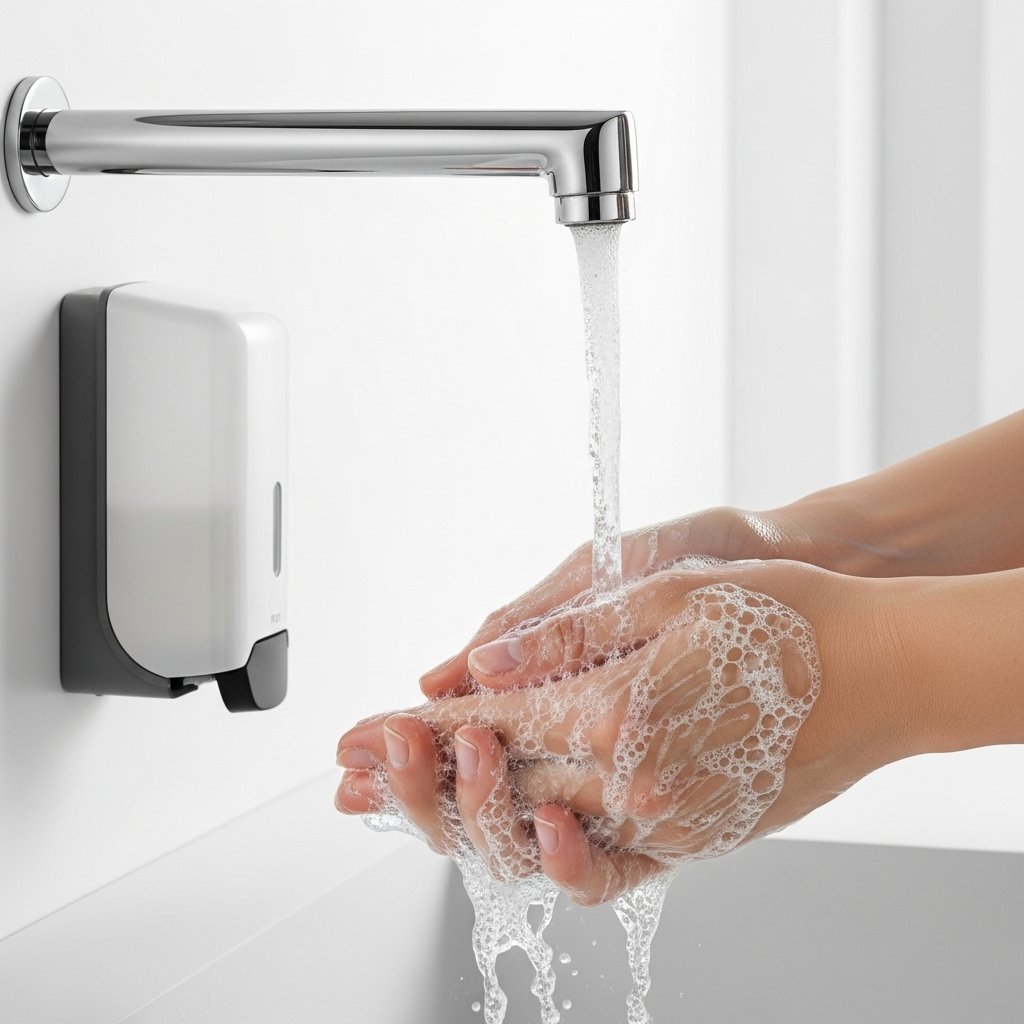In any environment where hygiene is a fundamental pillar – such as hospitals, clinics, laboratories, industrial kitchens and even commercial establishments – the presence of hand-washing sinks is not just a convenience, but a crucial sanitary requirement. This equipment plays a vital role in preventing and controlling infections, thus protecting both professionals and users. Understanding the regulations governing their installation and characteristics is therefore essential to ensuring safety and compliance.
Why does hand asepsis require specific sinks?
Hand asepsis, whether simple sanitization with soap and water or surgical antisepsis, is the most effective measure for reducing the transmission of microorganisms. For this practice to be effective, washbasins specifically designed for this purpose are indispensable. Ordinary sinks may not meet the requirements for splash control, suitable materials or the functionality needed for a thorough and safe wash.
Furthermore, in healthcare environments, the proximity and design of the washbasin directly influences the adherence of professionals to hand hygiene practices. The lack of an appropriate washbasin or its poor location can compromise safety. Consequently, the risk of cross-contamination and healthcare-related infections (HAIs) increases. Therefore, the correct choice is fundamental.
Sanitary Standards for Washbasins: What You Need to Know
Health standards, often dictated by bodies such as ANVISA (the National Health Surveillance Agency) in Brazil, are quite clear about the requirements for washbasins for hand asepsis, especially in health services. Below, we detail the key points:
Suitable material and easy sanitization
The most suitable and, in many cases, required material is stainless steel. This is because its surface is smooth and non-porous. This prevents the adhesion and proliferation of microorganisms. In addition, stainless steel is extremely easy to clean and disinfect, and resists corrosion by water and chemical cleaning and antiseptic products. As a result, it retains its hygienic properties for much longer.
Non-Contact Manual Actuation: Preventing Recontamination
To avoid recontamination of hands after washing, taps should be operated without manual contact. Models with:
- Pedal operated: Practical and hygienic, releasing water and soap with the foot.
- Sensor operated (presence): Modern and completely contactless.
- Elbow drive: Allows you to use your elbow to turn the water on/off, keeping your hands clean.
This ensures that, after washing, hands remain really clean.

Strategic Location and Accessibility
Washbasins should be strategically located at easily accessible points. Think about locations close to areas of greatest risk of contamination, such as entrances and exits to rooms, before and after contact with patients, and in preparation and handling rooms. It is also crucial that they are accessible to everyone, including people with disabilities.
Support structure and installation
The structure around the sink is also important. The wall behind the washbasin and the adjacent surfaces should be made of smooth, washable and resistant material. This makes it easier to clean up spills. The dimensions of the basin should be adequate to allow complete washing of hands and forearms without contact with the basin or the wall. Finally, washbasins should be equipped with dispensers for degerming or antiseptic liquid soap and paper towels (or sensor hand dryers).
Pedal garbage cans are also essential for hygienic disposal.
Ongoing Maintenance: Guaranteed Functionality
Regular maintenance and frequent cleaning of washbasins and their components are crucial to ensuring their functionality and effectiveness. Any leaks or malfunctions must be rectified immediately. This ensures that the asepsis point is always ready for use.
The Right Choice: Investing in Safety and Compliance
Investing in handwashing sinks that comply with health standards is, in fact, investing in everyone’s safety. Stainless steel is the smartest choice, not only because it complies with the requirements, but also because of its unparalleled durability and ease of maintenance. In this way, it represents excellent value for money in the long term. Ensuring that these hygiene points are always functional, well-equipped and compliant is a fundamental step towards a safe and healthy environment.

See more about washbasins: “Smart” taps and conscious water consumption


